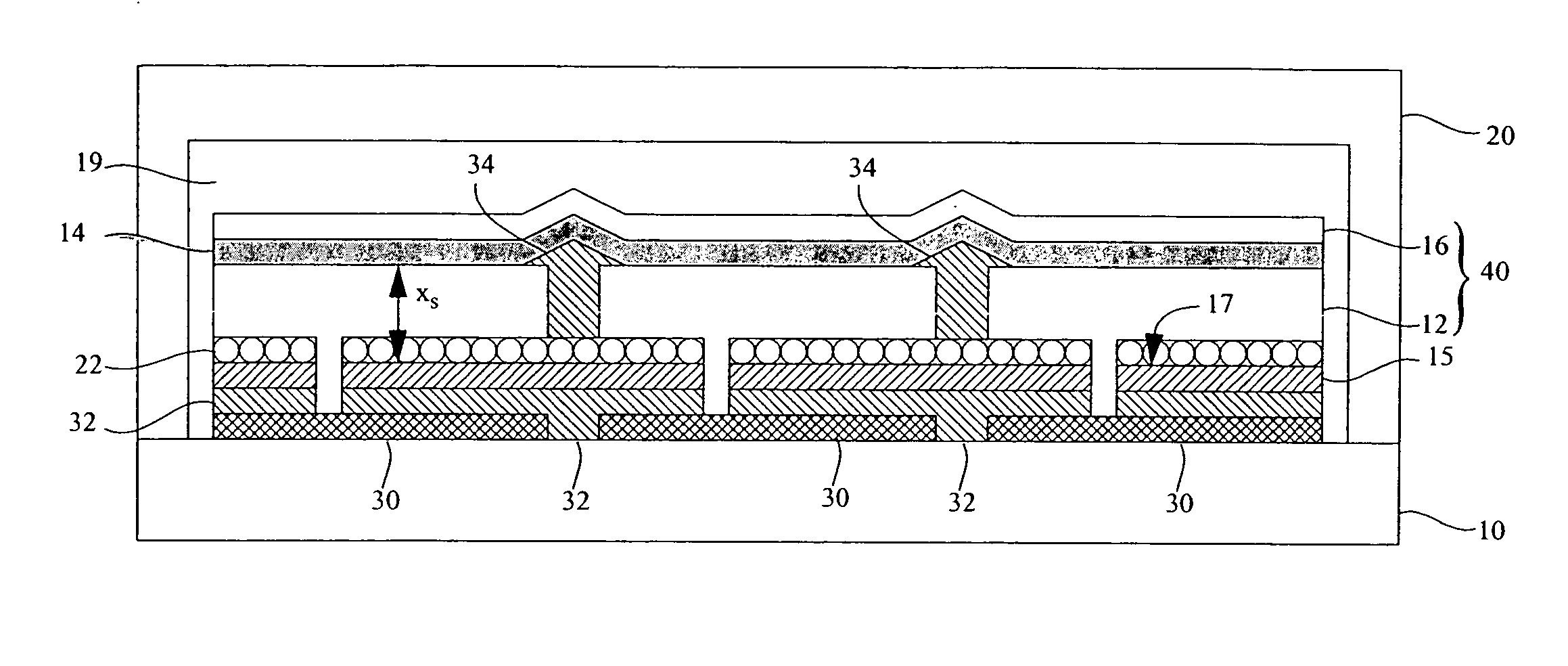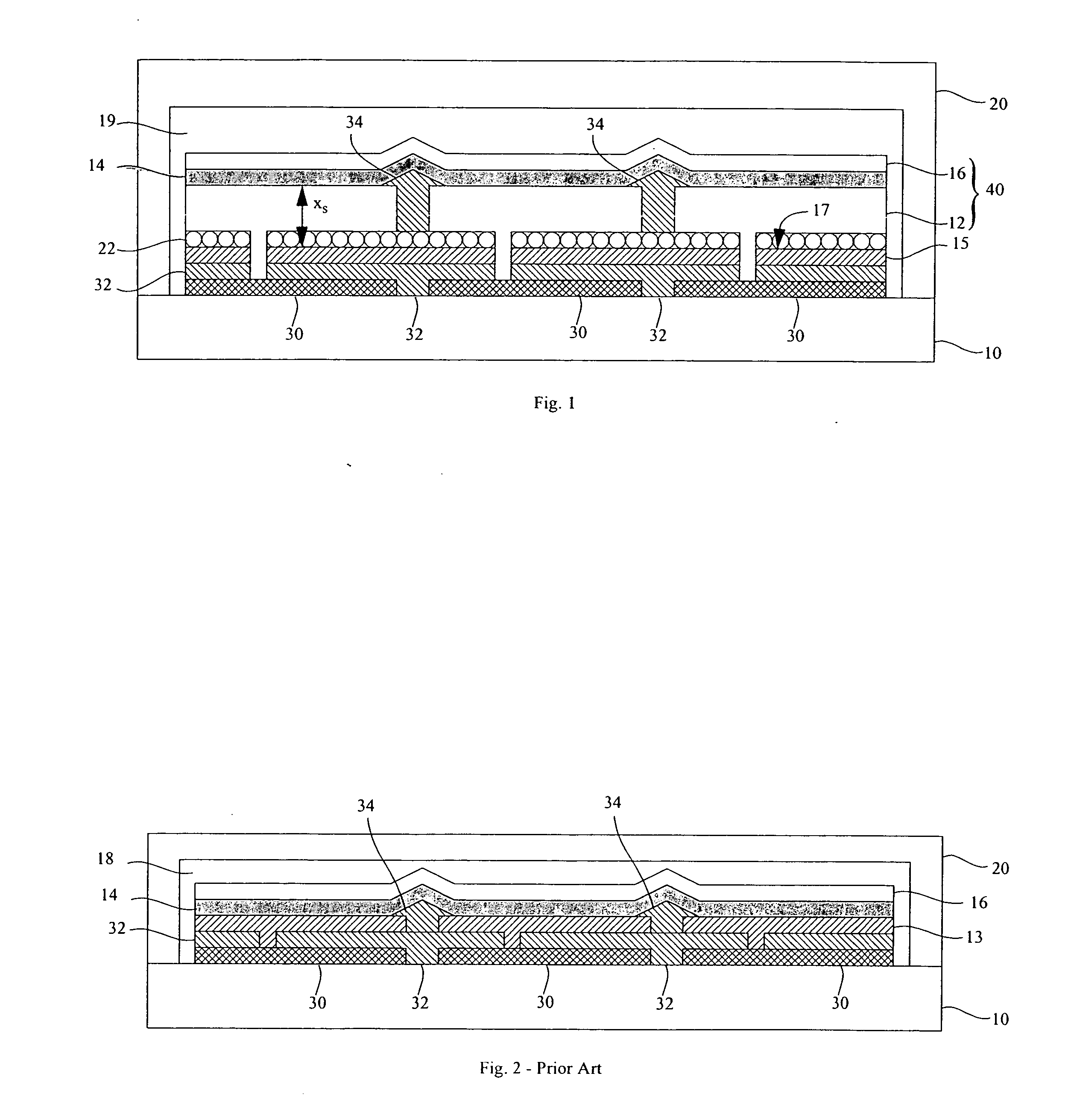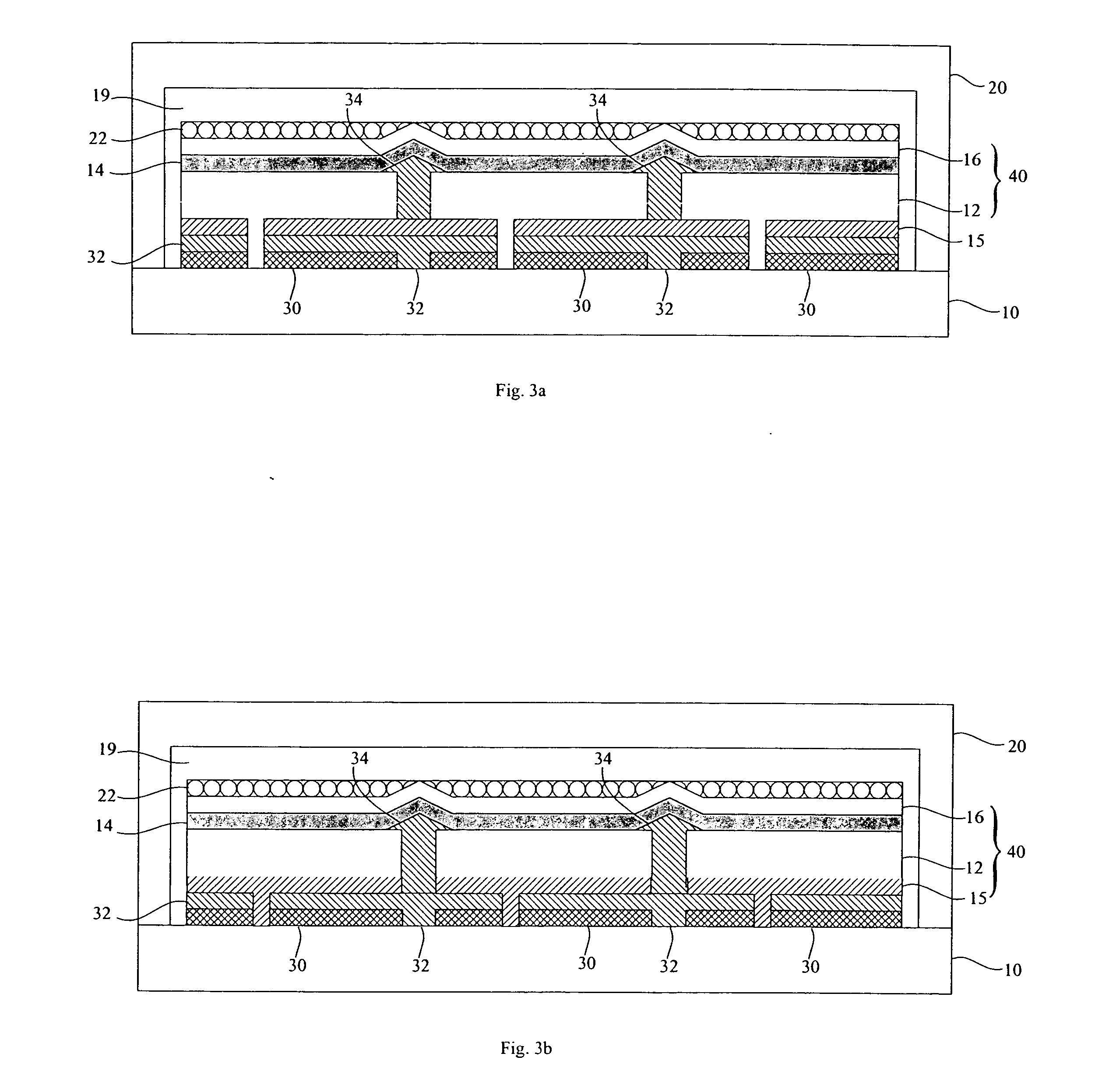OLED device having improved light output
a light-emitting diode and light-emitting layer technology, which is applied in the direction of organic semiconductor devices, discharge tubes/lamp details, discharge tubes luminescnet screens, etc., can solve the problems of limiting affecting the light output of oled light-emitting layers, and affecting the efficiency of oled devices, so as to achieve the effect of increasing the light output and maintaining the sharpness of oled devices
- Summary
- Abstract
- Description
- Claims
- Application Information
AI Technical Summary
Benefits of technology
Problems solved by technology
Method used
Image
Examples
Embodiment Construction
[0031] As described above, light generated within an OLED device can be emitted from the device, confined in the substrate or cover, or confined in the organic layers and electrodes. Materials having free electrons in the conduction band, for example metals, support formation of surface plasmons-polaritons in the presence of a radiating dipole. In the visible portion of the electromagnetic spectrum, such materials typically also have a dielectric constant with a negative real part. Accordingly, if a metallic, light-reflective electrode layer surface is located in proximity to an OLED emissive layer, some electrical energy may be converted to optical energy by the dipole that may then excite surface plasmons-polaritons (SP) at the metallic layer surface. Although it is true that SP modes are waveguide modes, the nature of SP waveguide modes differs significantly from that of Modes I, II, or III emitted light. First of all, the electromagnetic fields of SP modes are confined very clos...
PUM
 Login to View More
Login to View More Abstract
Description
Claims
Application Information
 Login to View More
Login to View More - R&D
- Intellectual Property
- Life Sciences
- Materials
- Tech Scout
- Unparalleled Data Quality
- Higher Quality Content
- 60% Fewer Hallucinations
Browse by: Latest US Patents, China's latest patents, Technical Efficacy Thesaurus, Application Domain, Technology Topic, Popular Technical Reports.
© 2025 PatSnap. All rights reserved.Legal|Privacy policy|Modern Slavery Act Transparency Statement|Sitemap|About US| Contact US: help@patsnap.com



